Quality Check of CNPowerbanks.com
1. All raw material and accessories must be checked or tested before entering products facilities all unqualified materials are immediately rejected.
2. We provide quality control testing and analysis for each product line
3. Workers manufacture this products in accordance with the provided technical documentation first several products of each day will be checked first by the worker, then by our full time QC inspector. Mass production will began only if the products have been tested and have passed inspection.
4. During mass production, personel will periodically check products to ensure randomized testing.
5. CNPowerbanks.com QC team do a complete inspection and parts are spot checked before they are able to move on to the next phase of production
6. Finished products are checked be sure they meet our level of quality
7. Quality feedback from the marketing department is fast and efficient,then those results are passed on to the Technical and QC departments which allows fast design improvements and corrections to happen quickly.
Our Power banks Test Standards
Characteristics testing:
| item |
test method |
Requirements |
| Charging/Cut-off Voltage |
4.20±0.01V |
|
| Discharge/Cut-off Voltage |
3.00±0.01V |
|
| Standard Charge |
Charge the battery at constant current of 0.2C to reach 4.2V. Then charge the battery at constant 4.2V voltage until , the charging current decreasing to 0.01C. |
Charging time≤8h |
| Standard Discharge |
After the standard charging,rest for 1 hour then discharge, to 3.0V 0.2c |
|
| Rate Discharge |
After the standard charging,rest for 1 hour then discharge, to 3.0V 0.5C |
Discharging time≥102Min |
| High Temperature Characteristics |
Fully charging, store them at (55±2)℃ for 2 hours, then discharge to 3.0V @0.5C |
Discharging time ≥102 Min , No transform, no explosion,no fire,no leakage |
| Low Temperature Characteristics |
Full charging, store them at (-10±2)℃ for 16-24 hours, then discharge to 3.0V @0.2C |
Discharging time ≥255 Min, No transform, no explosion,no fire,no leakage |
| Capacity retention |
Fully charging, store them at (20±2)℃ for 28 days, then discharge to 3.0V 0.2C |
Discharging time ≥255 Min,No transform, no explosion,no fire,no leakage |
| Cycle Life 25℃ |
Charge the battery @0.5C to reach 4.2V. Then charge the, battery at constant 4.2V voltage until the charging current, decreasing to 0.01C. Rest for 10 min. discharge to 3.0V 0.5C and rest for 10 min. Continue the charge/discharge cycles until discharge capacity lower than 80% of rated capacity |
Cycle life ≥500 |
| Storage |
Charge the battery to 40%~65% of its rated capacity using, standard charging mode, then keep it in an 20℃±5℃, humidity 45%~85% room for 12 months. Discharge it 0.2C until voltage down to 3.0V |
Discharge time ≥240Min |
Environment Characteristics:
| Item |
Testing Method |
Requirements |
| Hot & humidity testing |
Full charging, store it at 40±2℃ with 90%~95RH% for 48 hours. Then put the battery at room temperature 20±2℃ for 2 hours. Then discharge to 3.0V 0.5C |
Discharging time ≥72 Min no transform, No erosion, no explosion,no fire,no leakage |
| Vibration |
After Standard Charging,fixed the battery to vibration table,then subjected to vibration test for 30 minutes per axis of XYZ axes |
No explosion,no fire, no leakage. Voltage≥3.7V. |
| Shock test |
After Standard Charging,test condition Acceleration :100m/s2 Crash time per min: 40-80 times, Pulse lasting time : 16ms , Shock times : 1000±10times |
No explosion, no fire, no leakage. Voltage≥3.7V. |
| Drop Test |
After standard charging , drop the battery from 100cm, height onto a 18mm~20mm thick hardwood. Two sides of X,Y,Z directions each (total 6 times) After the drop test, discharge the battery 0.5C to 3.0V Then charge it 0.5C to full capacity. Continue the test within 3 times the battery should reach the target once |
Discharging time ≥102 Min No erosion, no explosion,no fire,no leakage |
Safety Performance
| Overcharge protection test |
After standard charging. Apply a 7.4V stable Voltage and 1C stable current to the battery for 8 hours |
No fire, no explosion |
| Over discharge protection test |
After discharged to the cut-off voltage,the battery shall be subjected to a short-circuit condition with a load of resistance less than 30Ω for 24 hours |
No fire, no explosion |
| Short circuiting protection test |
After standard charging,the battery shall be subjected to a short-circuit condition with a wire of resistance less than 100mΩ for 1 hour. Cut off the circuit, Charge the battery with constant current at 1.0C for 5s |
No fire, no explosion, Voltage≥3.7V |
| Impact Test |
After standard charge,Place the battery on a flat surface. A 9.1 kg article is to be dropped from a height of 100cm onto the sample. The battery is allowed to transform |
No fire, no explosion |
| Heating Test |
After standard charging,a battery is to be heated in an oven convection or circulating air oven. The temperature of the oven is to be raised at a rate of 5±2℃/min to a temperature of 130±2℃ and last for 30 minutes. |
No fire, no explosion |
| Over charge |
After standard charging, put the battery in fume hood. Add constant voltage & current 4.8V 3C to the battery. Charging it until the battery reaches 4.8V, charging current decreases to almost 0A. Record the temperature curve of the battery. When the battery temperature decreases to about 10℃ lower after reaching the peak temperature. End the test. This test is performed without PCM |
No fire, no explosion |
| Short circuiting test |
After standard charging, put the battery in fume hood. Connect the Negative Pole and Positive pole directly. (the wire’s resistance should below 50mΩ. Record the battery’s temperature curve during the test. When the battery temperature decreases to about 10℃ lower after reaching the peak temperature. End the test. This test is performed without PCM |
Safety Performance

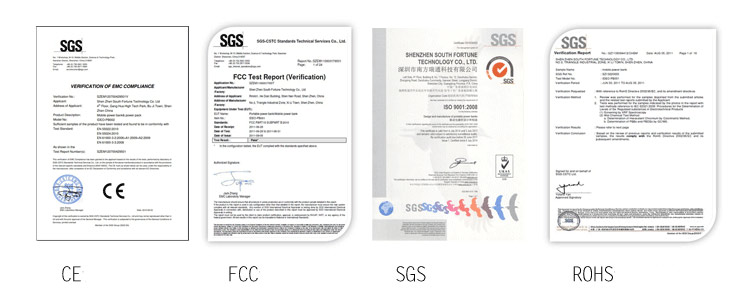


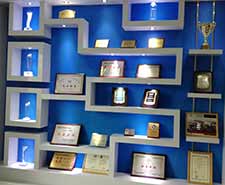

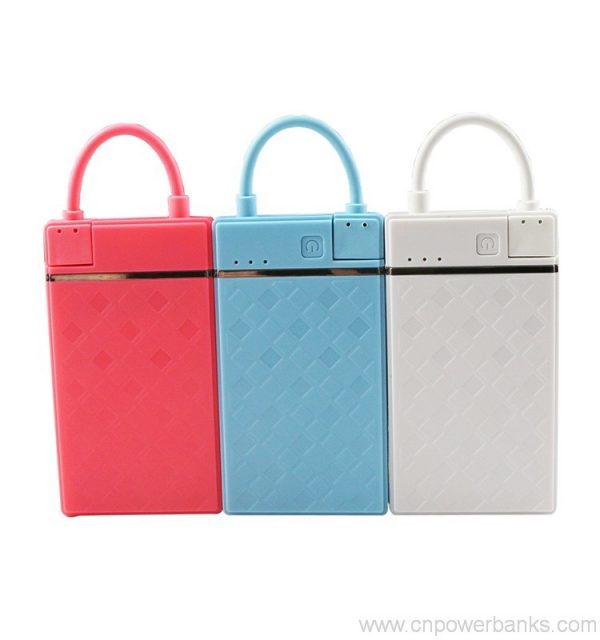
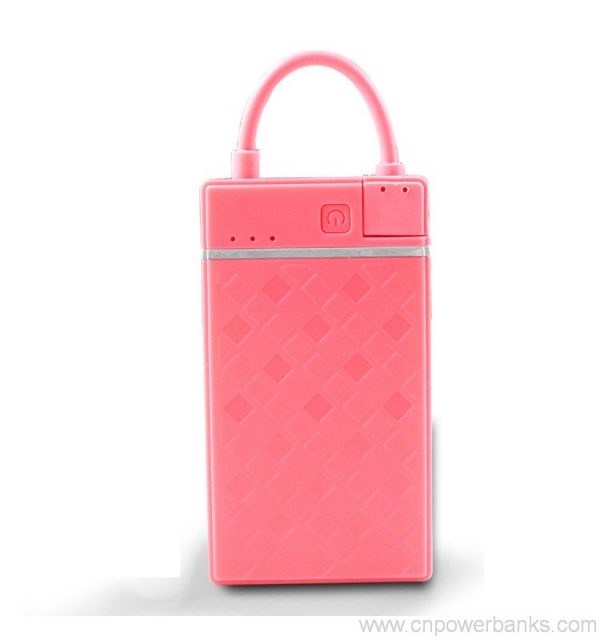
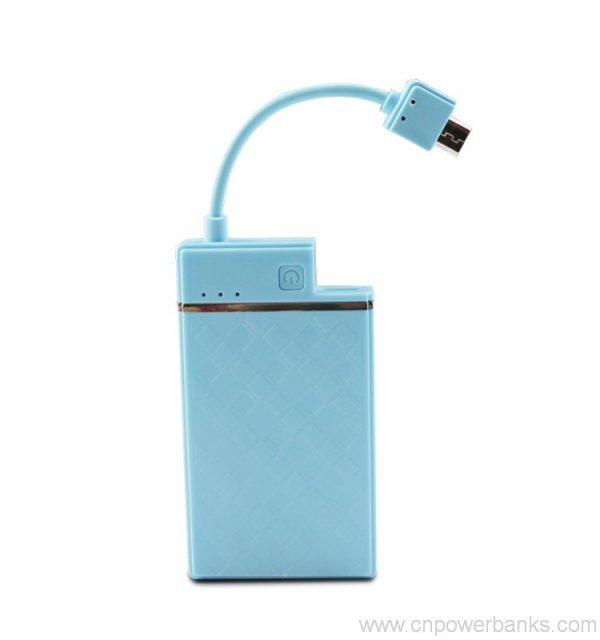
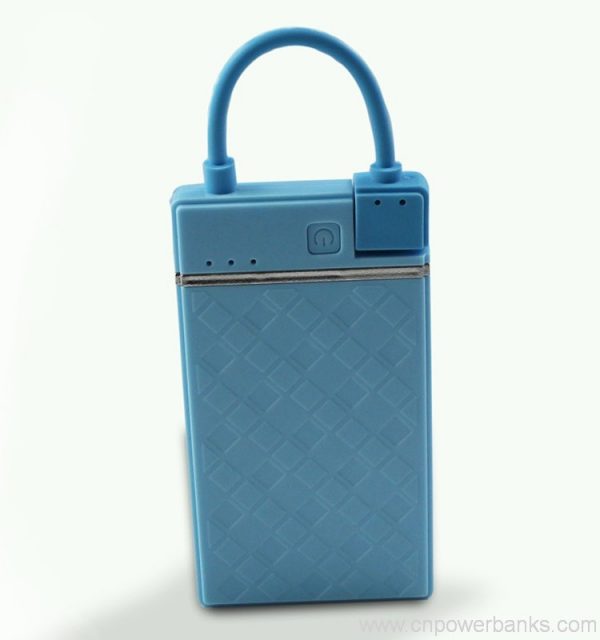


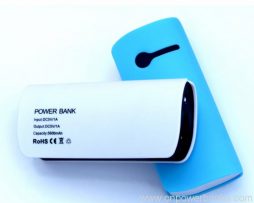
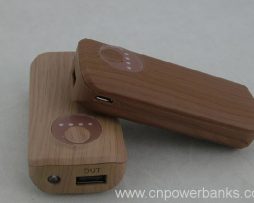
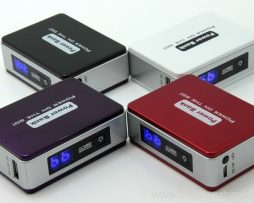
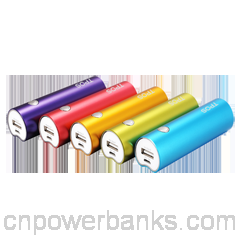
Be the first to review “Handbag shape fast charging external battery for mobile phone”